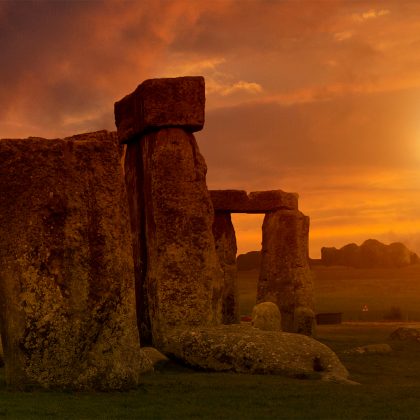A new editorial team for Proceedings of the Prehistoric Society
We are very excited to have been chosen as the new editors for Proceedings of the Prehistoric Society (PPS), the flagship journal of the Prehistoric Society. The journal has a long tradition of publishing high-impact articles on all aspects of prehistory from across the globe. Under the careful guidance of Dr Julie Gardiner, the outgoing Editor, the journal has seen sustained interest from the archaeological community, with both established and early career researchers represented in its pages. For many recent PhD graduates, PPS has marked the first high-impact publication of their work alongside landmark pieces by more established scholars. This is the sense of excitement we would like to maintain in the coming years.
We are an editorial team of three. Prof Daniela Hofmann (University of Bergen) is a specialist in Neolithic European archaeology who has worked in the UK, Germany and Norway. She currently writes mainly on migration and on social inequality. Dr Susan Greaney (University of Exeter) is an expert in Neolithic and Bronze Age Britain and Ireland, particularly monuments and chronologies, and has an interest in heritage and public engagement. Dr Courtney Nimura (University of Oxford) has wide-ranging interests largely based in the European Bronze and Iron Ages, but that extend to world rock art. Together, we will bring our expertise and networks to the table to build on the journal’s strengths.
We are particularly enthusiastic about increasing the geographical scope of the research we publish. PPS has always been global in its outlook, but it has generally been preferred by UK-based researchers, who are most aware of the Prehistoric Society and its day-to-day work. During our tenure as Editors, we want to broaden this scope and make the journal an even more attractive outlet for researchers working in other geographical areas. This will undoubtedly take us into new debates, perhaps even about what the term ‘prehistory’ can and should encompass in changing times, and we look forward to engaging with these discourses. At hand to help is our newly constituted Editorial Board comprising experts from the UK, Europe and other world regions. In full, we welcome:
Editors
Daniela Hofmann, University of Bergen, Norway: Editor-in-Chief; Susan Greaney, University of Exeter, UK; Courtney Nimura, University of Oxford, UK
Editorial Board
Mike Allen, Allen Environmental Archaeology and Bournemouth University, UK; Eszter Banffy, HUN-REN RCH Institute of Archaeology, Centre of Excellence of the Hungarian Academy of Sciences, Hungary; Graeme Barker, Cambridge University, UK; Marta Cintas Peña, University of Seville, Spain; Kerri Cleary, Archaeological Consultancy Services, Ireland; Rob Davis, British Museum, UK; Harry Fokkens, University of Leiden, The Netherlands; Chris Fowler, Newcastle University, UK; Charlie French, Cambridge University, UK; Cate Frieman, Australian National University, Australia; Frances Healy, Independent researcher, UK; Mette Løvschal, Aarhus University, Denmark; Sam Neil, University of Bordeaux, France; Laurent Olivier, National Museum of French Archaeology, Saint Germain en Laye, France; Innocent Pikirayi, University of Pretoria, South Africa; Doug Price, University of Wisconsin-Madison, USA; Clive Ruggles, University of Leicester, UK; Niall Sharples, Cardiff University, UK; Alison Sheridan, National Museums Scotland, UK; Junzo Uchiyama, Lund University, Sweden; Sean Ulm, James Cook University, Australia; Graeme Warren, University College Dublin, Ireland.
We are honoured to have so many inspirational scholars working with us – thank you for being a part of the new team! You’ll also see these changes reflected on the Cambridge Core website shortly.
We also want to continue to champion a younger generation of researchers. Helping early career colleagues navigate the peer-review and revision process is a hugely rewarding task, and it ensures that the journal remains fresh in its outlook, bringing readers the latest results and interpretations. We will therefore make a special effort to foster new archaeological voices, ensuring they are heard. This is part of a drive for widening access to academic publishing more generally – the main factor determining publication is the quality of the research, not titles, positions or influence in the field.
PPS is known for well-supported, high-quality research. It allows articles that present a high level of primary data, including contributions from commercial archaeology and from the museum and heritage management sector. We want to remain a place where researchers from all sections of the archaeological community want to publish their exciting new sites and finds as they emerge. We will also encourage more discussion-based and programmatic pieces, tackling issues and questions that affect prehistoric research more generally.
To celebrate this next phase in the life of the journal, you’ll notice that our inaugural issue, volume 91, has a fresh look. We hope that you are as excited about these plans as we are – if so, submit your research to us!






